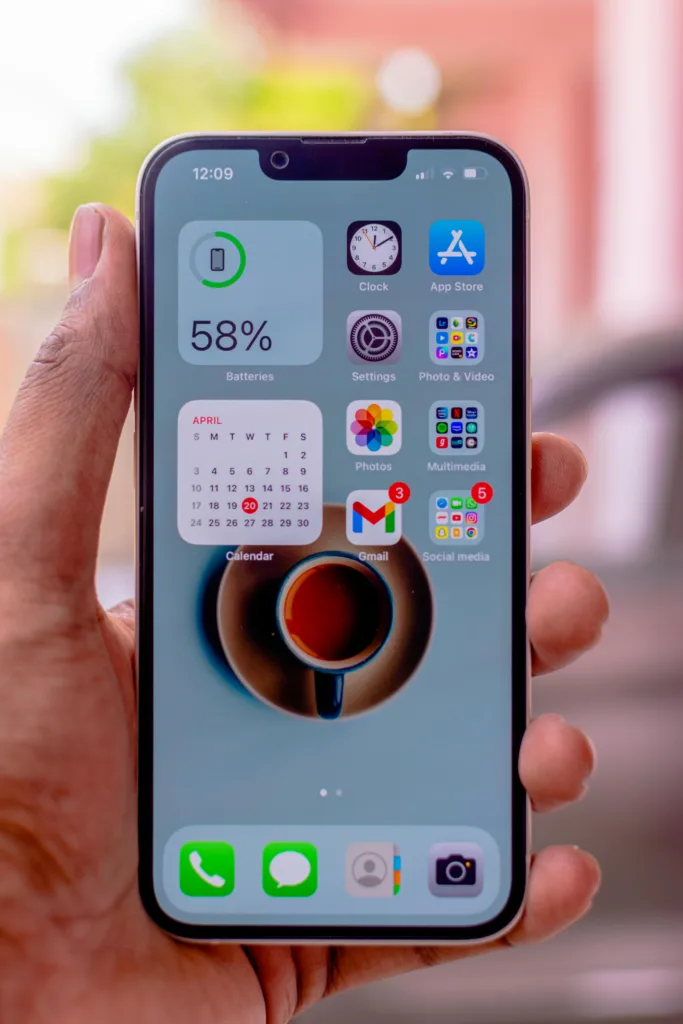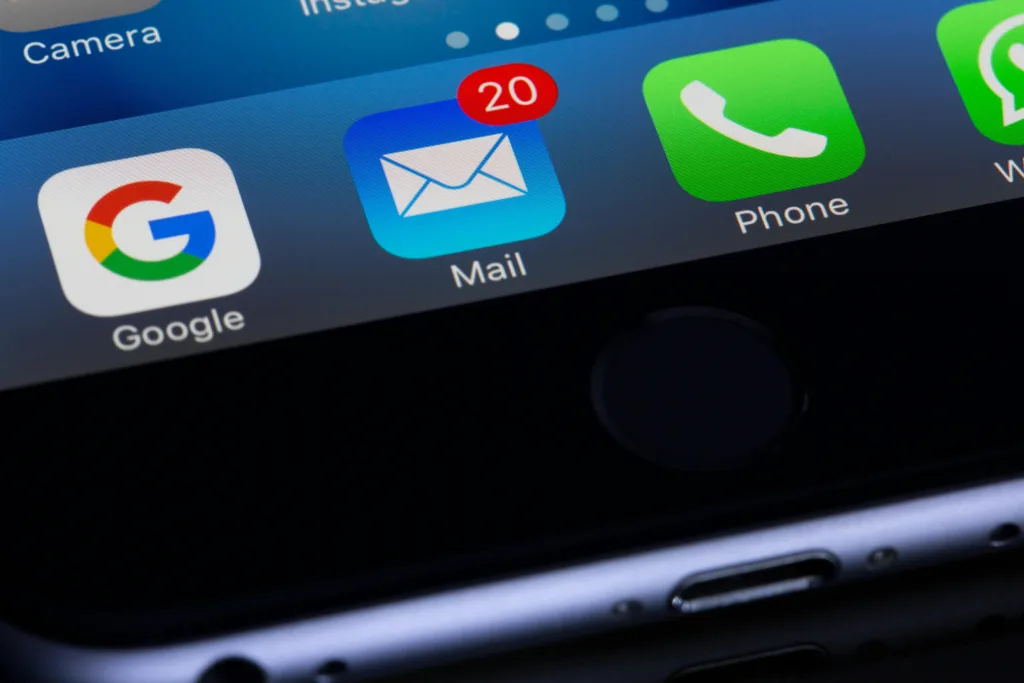Let’s discuss Mobile Email Hosting, its benefits, and the top Mobile Email Hosting Providers.
Mobile Email Hosting

Introduction
In today’s interconnected world, email remains an essential tool for communication, collaboration, and business operations. Whether you’re a small business owner, a remote worker, or a corporate executive, your inbox is the gateway to a multitude of opportunities and interactions. But what happens when you’re away from your desk, traveling, or simply need to access your emails on the go? That is where Mobile Email Hosting comes in Handy.
What is Mobile Email Hosting
Mobile Email Hosting refers to a service that allows you to access and manage your email account from your mobile device, such as a smartphone or tablet. This typically involves using a mobile email app or the web browser on your device to connect to your email server. Most email hosting providers offer mobile compatibility, so you can check and send emails on the go.
Mobile Email Hosting extends the capabilities of traditional email hosting to mobile devices. It ensures that your emails, contacts, calendars, and other essential data remain synchronized across all your gadgets. Whether you’re using an Android phone, an iPhone, or a tablet, mobile email hosting allows you to manage your inbox efficiently.
Benefits of Mobile Email Hosting
- Global Mobility: Professionals are no longer confined to their desks. Whether you’re attending a conference, traveling for business, or working remotely, having access to your emails on your mobile device ensures you stay connected wherever you are.
- Real-Time Communication: Mobile email hosting enables real-time communication. You can receive and respond to urgent messages promptly, even when away from your computer.
- Collaboration: Collaborative work environments demand seamless communication. With mobile email hosting, you can share files, schedule meetings, and collaborate with colleagues effortlessly.
- Productivity Boost: Imagine finalizing a deal while waiting at the airport or approving a proposal during your morning commute. Mobile email hosting empowers productivity by eliminating delays.
Now, let’s explore the top mobile email hosting providers and guide through setting up mobile email clients, and also the best practices for security.
Top Mobile Email Hosting Providers
- Why Bluehost?
- Generous Storage: Bluehost offers ample storage space, allowing you to store your emails and attachments without worry.
- Integration with Custom Domains: You can seamlessly connect your business domain to Bluehost’s email services.
- Super Simple Setup: Even if you’re not tech-savvy, Bluehost makes email setup a breeze.
- Strong Security Features: Protect your communications with robust security measures.
- Pocket-Friendly Pricing: Bluehost’s pricing plans are budget-friendly.
- Considerations:
- While Bluehost lacks ticket support and monthly billing options, its overall performance is impressive.
2. DreamHost
- Why DreamHost?
- Best Overall: DreamHost excels in usability, reliability, and features.
- Unlimited Email Accounts and Storage: Perfect for businesses of all sizes.
- Video Calling Integration: Enhance communication with video capabilities.
- Cost-Effective Plans: DreamHost offers value for money.
3. A2 Hosting
- Why A2 Hosting?
- Top Security: A2 Hosting prioritizes security, making it ideal for sensitive communications.
- Robust Infrastructure: Enjoy reliable email services backed by powerful servers.
- Ease of Use: A2 Hosting’s user-friendly interface simplifies email management.
- Scalability: It grows with your business needs.
4. Zoho Mail
- Why Zoho Mail?
- Flexibility: Zoho Mail adapts to your workflow, allowing customization.
- Feature-Rich: Collaboration tools, shared calendars, and more.
- Affordable Plans: Suitable for both individuals and businesses.
- Integration Options: Seamlessly connect Zoho Mail with other apps.
5. Google Workspace
- Why Google Workspace?
- All-in-One Platform: Google Workspace combines email, productivity apps, and cloud storage.
- Gmail Integration: Familiar interface with powerful features.
- Collaboration Tools: Share documents, collaborate in real time, and schedule meetings.
- Security: Google’s robust security protocols safeguard your data.

Choosing the Right Mobile Email Hosting Service
Factors to Consider
- Features and Functionality:
- Evaluate the features offered by different providers. Look for:
- Email Storage: Sufficient storage for your needs.
- Spam Filtering: Effective spam protection.
- Collaboration Tools: Shared calendars, document collaboration, and task management.
- Mobile App: A user-friendly mobile app for seamless access.
- Evaluate the features offered by different providers. Look for:
- Pricing and Scalability:
- Compare pricing plans. Consider:
- Monthly vs. Annual Billing: Choose what suits your budget.
- Scalability: Ensure the plan can accommodate your growing needs.
- Compare pricing plans. Consider:
- Integration with Existing Tools:
- If you use other software (e.g., CRM, project management), ensure compatibility.
- Look for providers that integrate well with popular tools.
- Security Measures:
- Encryption: Ensure emails are encrypted during transmission.
- Two-Factor Authentication (2FA): Enhance security.
- Data Backup: Regular backups protect against data loss.
- Customer Support:
- Check the availability and responsiveness of customer support.
- Look for live chat, email, or phone support options.
- User Experience:
- Sign up for a trial if available. Evaluate the interface and ease of use.
- Consider mobile app ratings and user reviews.
Now, Let’s dive into the process of setting up mobile email clients for your hosted email accounts. Whether you’re using an Android device, an iPhone, or a tablet, configuring your email client correctly ensures smooth communication. Here’s how to get started:
Setting Up Mobile Email Clients
1. Choose Your Email Client
Before diving into the setup process, decide which email client you’ll use on your mobile device. Some popular options include:
- Gmail: If you’re using Google Workspace or have a Gmail account, the Gmail app is a natural choice.
- Outlook: Microsoft 365 users can opt for the Outlook app, which integrates seamlessly with their email service.
- Apple Mail: iOS users can use the built-in Apple Mail app.
- Third-Party Apps: There are several third-party email apps available on both Android and iOS platforms.
Gather Account Information
To set up your mobile email client, you’ll need the following details:
- Email Address: Your full email address (e.g., yourname@example.com).
- Password: The password associated with your email account.
- Incoming Server Settings (IMAP/POP):
- IMAP: Recommended for syncing emails across devices.
- Server: imap.yourdomain.com
- Port: 993 (SSL/TLS)
- POP: Suitable if you want to download emails to a single device.
- Server: pop.yourdomain.com
- Port: 995 (SSL/TLS)
- IMAP: Recommended for syncing emails across devices.
- Outgoing Server Settings (SMTP):
- Server: smtp.yourdomain.com
- Port: 587 (STARTTLS)
Configure Your Email Client
For Gmail (Android/iOS):
- Open the Gmail app.
- Tap the three horizontal lines (menu) in the top-left corner.
- Select “Settings” > your email account.
- Tap “Add account” > “Personal (IMAP/POP)”.
- Follow the prompts, entering your account details.
For Outlook (Android/iOS):
- Open the Outlook app.
- Tap the “+” icon to add an account.
- Choose “Add Email Account.”
- Enter your email address and password.
- Select “IMAP” or “POP” and provide the server settings.
For Apple Mail (iOS):
- Go to “Settings” > “Passwords & Accounts.”
- Tap “Add Account” > “Other.”
- Select “Add Mail Account.”
- Enter your account details and choose “IMAP” or “POP.”
Test and Sync
Once configured, send a test email to ensure everything is working correctly. Your mobile email client should sync your inbox, sent items, and other folders.
Additional Tips
- Push Notifications: Enable push notifications to receive real-time alerts for new emails.
- Security: Use secure connections (SSL/TLS) for both incoming and outgoing servers.
- App Updates: Keep your email app updated for security patches and new features.
Remember, the setup process may vary slightly based on your chosen email client, but these general steps should guide you. Happy emailing on the go! 📧📱
Now, Let’s explore best practices for ensuring mobile email security. Protecting your email communication is crucial to safeguard sensitive information and maintain privacy.
Best Practices for Mobile Email Security.
1. Use Strong Authentication Methods
- Two-Factor Authentication (2FA): Enable 2FA for an extra layer of security. Even if someone gains access to your password, they won’t be able to log in without the second authentication factor (e.g., a code sent to your phone).
2. Keep Your Mobile Device Secure
- Lock Screen: Set up a strong PIN, password, or biometric lock for your device.
- Device Encryption: Enable full-disk encryption to protect data stored on your phone.
- Remote Wipe: Configure remote wipe functionality in case your device is lost or stolen.
3. Choose Secure Email Apps
- Use Official Apps: Download email apps from official app stores (Google Play Store, Apple App Store). Avoid third-party apps with questionable security practices.
- Regular Updates: Keep your email app updated to receive security patches.
4. Beware of Phishing Attacks
- Verify Links: Don’t click on suspicious links in emails. Hover over them to see the actual URL.
- Check Sender: Verify the sender’s email address. Be cautious of unexpected attachments or urgent requests.
5. Encrypt Your Emails
- Transport Layer Security (TLS): Ensure your email client uses TLS for secure communication between your device and the email server.
- End-to-End Encryption: Consider using services that offer end-to-end encryption (e.g., ProtonMail, Signal).
6. Avoid Public Wi-Fi for Sensitive Tasks
- Public Wi-Fi Networks: Avoid accessing sensitive emails or logging in to your accounts while connected to public Wi-Fi. Use a virtual private network (VPN) if necessary.
7. Regularly Review Account Activity
- Check Login History: Monitor your email account for any unauthorized logins.
- Review Connected Devices: Ensure only trusted devices have access to your email account.
8. Secure Your Cloud Storage
- If you use cloud storage services (e.g., Google Drive, OneDrive), secure them with strong passwords and enable two-step verification.
9. Educate Yourself and Your Team
- Stay informed about the latest security threats.
- Educate colleagues and team members about email security practices.
Remember, mobile email security is a shared responsibility. By following these practices, you can minimize risks and keep your communications confidential. 📧🔒
Let’s wrap up our exploration of Mobile Email Hosting with a concise conclusion.
Conclusion
In the fast-paced digital landscape, mobile email hosting has become more than a convenience—it’s a necessity. Whether you’re a business professional, a freelancer, or a student, having your emails accessible on your mobile device ensures you never miss a crucial message. Let’s recap what we’ve learned:
- Mobile Email Hosting: It extends traditional email hosting to mobile devices, allowing seamless access to your inbox, contacts, and calendars.
- Benefits:
- Global Mobility: Stay connected wherever you are.
- Real-Time Communication: Respond promptly to urgent messages.
- Collaboration: Share files and collaborate effortlessly.
- Productivity Boost: Make decisions on the go.
- Choosing a Provider:
- Consider features, pricing, security, and integration options.
- Explore providers like Google Workspace, Microsoft 365, Zoho Mail, and FastMail.
- Setting Up Mobile Email Clients:
- Choose your preferred email app (Gmail, Outlook, Apple Mail, or third-party).
- Gather account details and configure the app.
- Security Best Practices:
- Use strong authentication methods.
- Keep your device secure.
- Beware of phishing attacks.
- Encrypt your emails.
Remember, mobile email hosting isn’t just about convenience; it’s also about staying connected, collaborating effectively, and maintaining the security of your communications. So, whether you’re catching a flight or sipping coffee at a café, your inbox is right there with you. Happy emailing! 📧🌐
Learn About Globe AI, a new chatGPT-like AI tool for visually structured output. Here.
Get 20% OFF Hostinger Hosting Starting from as low as $2.99/month
Newsletter!
Are you not yet subscribed to our free Newsletter?
Subscribe below to get the latest trends sent to you email every week!


